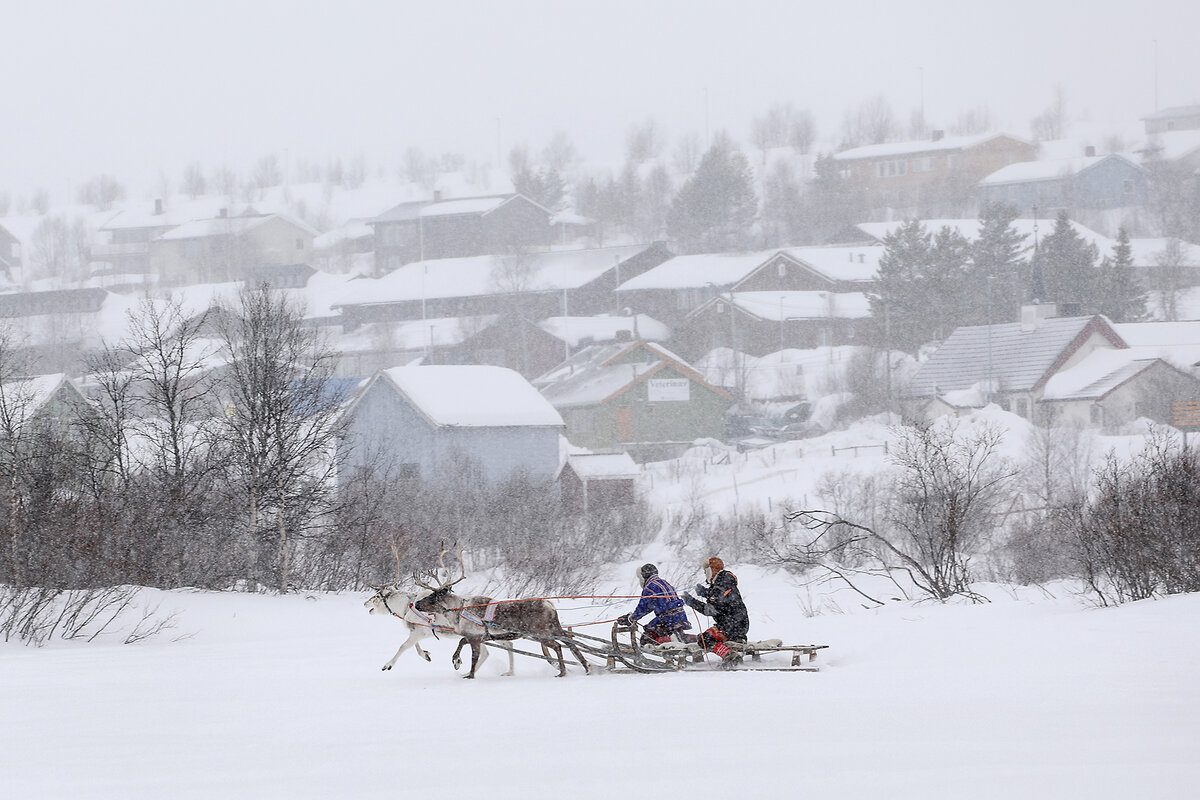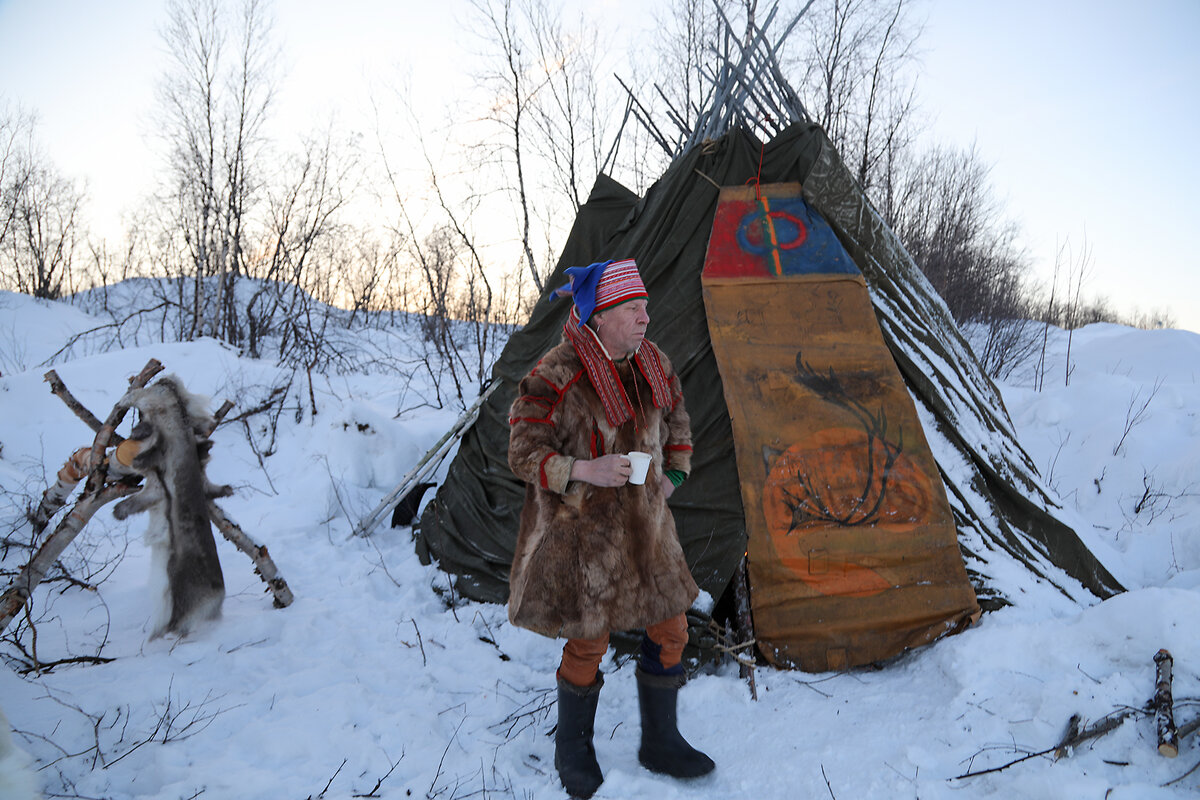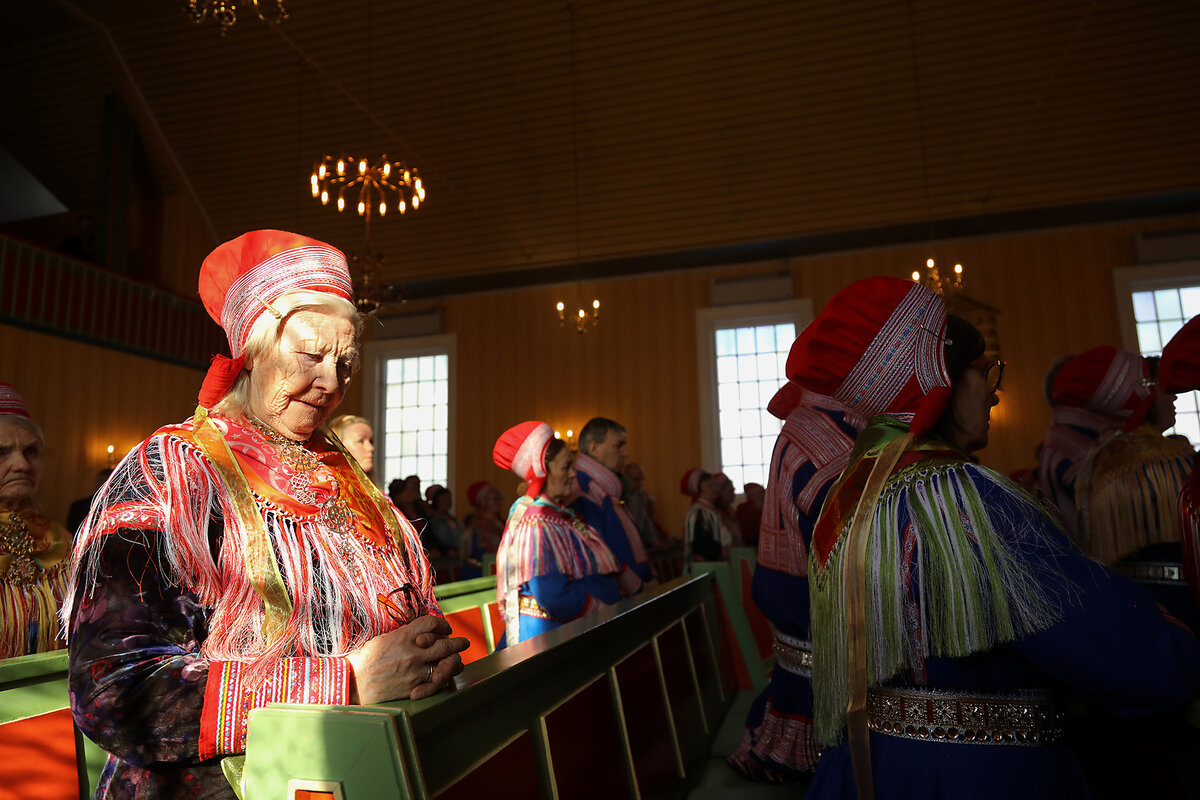The Sami people bring on spring – with reindeer and sleighs
Loading...
| Kautokeino, Norway
In the Sapmi, the Arctic homeland of the Sami people, the end of winter isn’t announced by green sprouts or the cheery chirps of birds. Instead, the Sami sing folk songs around a roaring fire and race reindeer in the snow.
The Sami live in a frigid expanse stretching across the northern reaches of Norway, Sweden, Finland, and the Kola Peninsula in Russia. Since the 1970s, the weeklong Easter festival in Kautokeino, Norway, has attracted Sami and a growing number of non-Sami participants. Although the Sami people’s relationship with Christianity has been contentious at times, Easter has become a popular spring feast, when Kautokeino Church fills with worshippers in their finest brightly colored gákti, or traditional clothing.
“Spring has always been an important time in such a climate-wise, dramatic world as the Arctic,” says Ánde Somby, a traditional joik singer and associate professor of law at the University of Tromsø.
The heart of the celebration is the joik, the singing with which the Sami celebrate the things that mean the most to them. “Joik” is also a transitive verb. You joik winter, your love, or a pack of wolves.
The joik, and Sami culture generally, for a long time had been endangered under the fornorsking, or Norwegianization, policy. Yet with the Easter festival, the Sami are experiencing a “renaissance,” Mr. Somby says.
“Soon, the Easter celebration will be out of Christianity and missionaries’ hands,” he adds, noting “how much inspiration and creative power the youth display during the Easter festival.”









